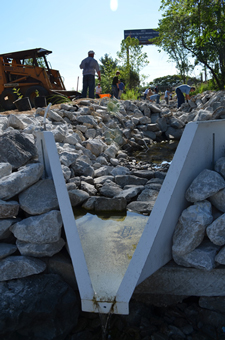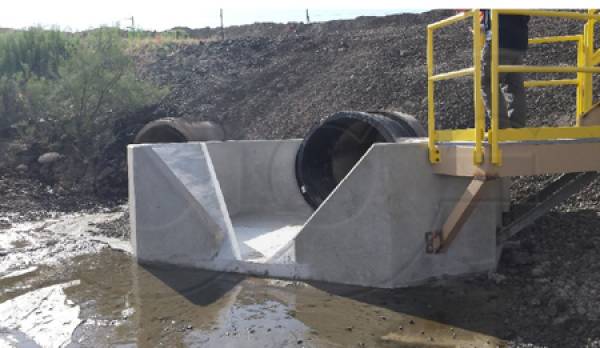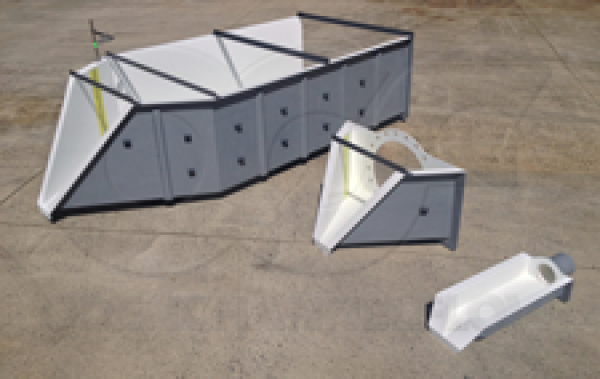This website uses a variety of cookies, which you consent to if you continue to use this site. You can read our Privacy Policy for
details about how these cookies are used, and to grant or withdraw your consent for certain types of cookies.
H Flumes for Storm Water Flows
 H Flumes can be a good choice when monitoring stormwater flows, whether mounting in a channel or at the end of a discharge pipe. H Flumes provide the low flow sensitivity of a thin-plat weir with the self-cleaning features of a flume. More than any other style of flume, H Flumes are measure a wide range of flow – just like those encountered during storm events.
H Flumes can be a good choice when monitoring stormwater flows, whether mounting in a channel or at the end of a discharge pipe. H Flumes provide the low flow sensitivity of a thin-plat weir with the self-cleaning features of a flume. More than any other style of flume, H Flumes are measure a wide range of flow – just like those encountered during storm events.
The flat-bottomed designed is well suited to passing the grit, stones, debris, and trash that is commonly found in stormwater flows. The smaller debris passes right through the flume, while the larger debris readily pushes though as water builds up behind it.
The outward opening V-notch of the discharge of the flume provides low-flow sensitivity (at the bottom of the V), while still retaining the ability to pass much larger flows. The turndown ratio of these flumes is as great at 10,000:1 – far greater than other flume types.
H Flumes do require free-spilling discharges as they have little resistance to the effects of downstream water conditions, but for storm water flows this is generally not a problem as flumes are normally installed at the end of stormwater pipes before they spill into retention basins. If submergence is suspected, it is important to raise the flume so that it outside of the effects of the downstream channel.
An additional benefit of the H Flume is that should it low flows / high sediment loads, a false floor can be installed in the approach section (sloping at 1:8) to direct the sediments along one wall for – allowing the flow stream to sour the sediments. Sloping the floor allows for reliable head readings in spite of heavy sediment loads. Research has shown that sloping the approach section floor results in a difference in calibration of less than 1%.
Finally, if the velocity of the water entering the flume is high and it is relatively free of large or floating debris, energy absorbers and flow tranquilizing racks can be installed in the approach section to help calm and condition the flow before it enters the flume.
Turndown ratio refers to the width of the operational range of a device, and is defined as the ratio of the maximum capacity to minimum capacity. For example, a device with a maximum output of 10 units and a minimum output of 2 units has a turndown ratio of 5.
Sources: Wikipedia, Chute Entrances For HS, H, and HL Flumes
Related Blog Posts
Explore more insights in our blog.

LOCATIONS IN ATLANTA, GA & BOISE, ID




